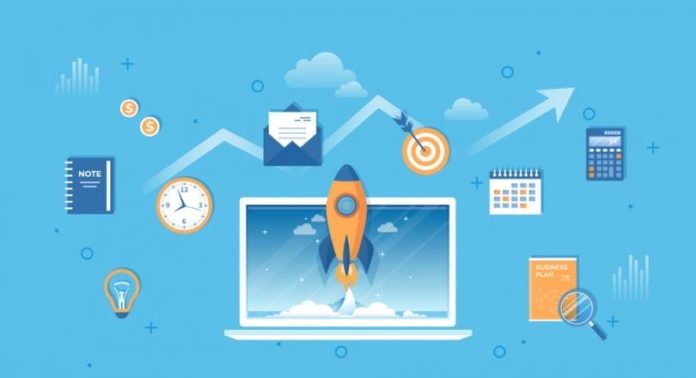By 2025, AI will drive 95% of customer interactions, an inevitable shift that’s already underway. The brands that will be doing it well, will see greater engagement, conversion, and lasting loyalty from their customers. The flip side, however, is that most companies are still personalizing all wrong. Consumers have evolved Old-school methods like throwing in a name on an email or recommending product wishes based on a consumer’s browsing interests last week just don’t cut it anymore. Consumers expect seamless experiences that adapt to their ever-changing needs, values, and real-life contexts. If brands can’t provide these experiences, customers don’t just tune out; they jump ship to better competitors.
Failure in personalization is a risk, not personalization. Most marketers unknowingly stumble into hidden traps within the action that make their effort feel robotic, intrusive, or downright irrelevant. This article discusses some of the major personalization blunders you should avoid making in 2025. Most importantly, we share their solutions for fixing such mistakes, with applicable strategies and SaaS-specific examples to keep those marketing efforts ahead of the curve.
1. Contextual Blindness: Lack of Real-Time Adaptation
Almost all marketers understand the essence of data-driven personalized marketing. However, the critical error most marketers make is to confine their historical data and neglect real-time context. This is a gross disaster. Considering a customer expressed interest in a product last month, it certainly does not mean the same interest exists today. Changes in economy, in trending topics, and in personal priorities are instantaneous. Yet brands give the same recommendations and messaging without any considerations as to what is happening at the moment. No wonder 69% of consumers say they get irrelevant messaging from brands, and 41% feel undervalued concerning the service they receive.
However, Netflix nailed it. The homepage does not merely suggest shows based on whatever you saw last week; it adapts on a real-time personalization basis according to a series of internal & external events. During the COVID-19 pandemic, Netflix sought to promote entertainment closer to home and family-oriented content with a global change in consumer mood. Consequently, consumer engagement soared with times watched during the absolute peak of the pandemic moving up by 35%. That was the contextual personalization being put to good use.
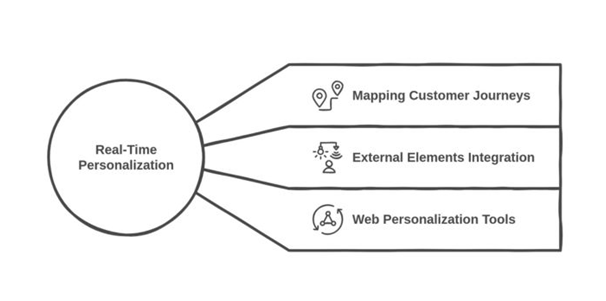
What are the various methods of doing so for your marketing strategies? Begin with mapping customer journeys, including time-sensitive triggers, and then layer on other external elements such as seasonality, economic trends, or breaking news. For instance, a visitor on your pricing page during a market downturn may respond more positively to “Recession-Proof Solutions” rather than just a general value proposition. Use web personalization platforms to A/B test these real-time adjustments and optimize messaging based on what is going on in your customers’ world, not just based on their past actions.
2. Unaddressed Algorithmic Bias
If personalization goes wrong, it feels irrelevant, and sometimes even harmful. We have already seen the negatives of ignoring real-time context as being an opportunity lost, yet there exists another layer of risk that marketers, in the majority of cases, do not acknowledge: algorithmic bias.
The effectiveness of AI-based personalization is only as good as the data it learns from. If that data has some hidden biases, then so will your marketing. For instance, one past study found that AI-powered ads for highly-skilled tech positions were shown 30 percent less to women. Not because of deliberate gender discrimination, but because the algorithm detected an existing societal pattern and kicked it up a notch. Similar mechanisms operate in marketing—AI could discriminate or misrepresent important chunks of customer segments in ad targeting, content recommendations, or even e-mail segmentation. Some brands are tackling these bias issues directly. One such example is Salesforce Einstein, which provides built-in bias-detection audits to flag skewed audience segments for marketing campaigns. This process ensures brands do not unintentionally reinforce stereotypes or limit their reach to biased inaccuracies.
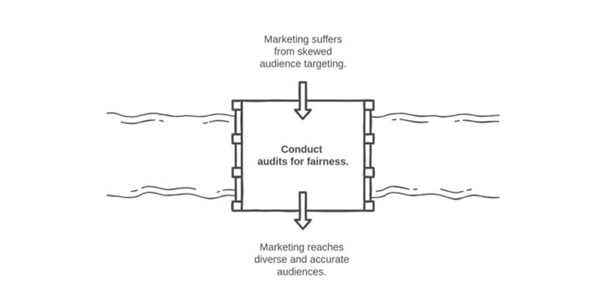
So how do you fix this? Start with an audit of your AI models for fairness, using tools like Fairness Indicators that highlight potential biases in the audience segmentation. But don’t stop there – diversify your training data sources to include the underrepresented groups. If your personalization engine learns from only the past high-performing customer segments, it will keep serving the same type of audiences while ignoring others that could equally be valuable.
Bias slips in easily; the AI may not mean inculcating bias, but as a marketer, it is important to identify it so that it does not interfere with the customer experience. Just like real-time context is important in personalization, ethical personalization is all about making sure the AI sees the entire reality and not just a distorted one.
3. Siloed Data Dependency: Assuming All Zero-Party Data is Equal
We have already discussed the dangers of ignoring real-time context and the hidden biases of AI-powered personalization. But there is one last consideration, even if you get the two right: treating all zero-party data equally valuable can be one of your strategy’s most important and deadly flaws.
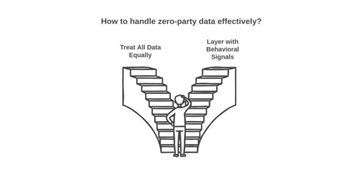
The reality is that consumers are becoming increasingly careful about what they share. Currently, 31% of users reject nonessential cookies altogether, and among those who claim not to use them, 36% do so because they do not trust the website with their data. Additionally, about 27% mention security risks like hacking as reasons for not using such cookies. Thus, marketers are told that zero-party data would be the holy grail in developing a privacy-first personalization. However, there is a catch: just because a customer shares data does not mean that data gives the complete picture.
However, Canva does it smarter: apart from depending on input received directly from users, Canva is learning from behaviors . For instance, if someone prefers to modify a ready-made template, he is assumed to want DIY design tools; hence, Canva’s offering to the user will be tailored to this decision. In this way, the platform can customize recommendations and features without requiring users to specify what they want, providing a very natural, undisruptive kind of personalization.
So, how do you avoid the trap of treating all zero-party data as equal? Layer it with behavioral signals. Is someone spending a lot of time on your pricing page but never filling out a form? That’s likely a budget-conscious lead who needs a different nudge than someone browsing case studies. Use tools like Qualtrics to anonymize sensitive inputs while still extracting useful insights. The key thing is to respect consumer privacy while still creating meaningful personalized experiences.
4. Static Segmentation in a Dynamic Market
We’ve discussed how chaos happens in personalization when the momentary real-time context is derived, creating algorithmic bias, which is not fair, and also by processing too much zero-party data, leaving no room for the whole solution. One more mistake can undo all of it: if you infer that your audience is the same.
Within B2B, customer priorities do not simply change but rather continuously evolve. Budgets are realigned, strategies are changed, and the market conditions are in a state of flux. A prospect who had been evaluating solutions six months ago may now have a whole new set of pain points, and without reflecting that in your personalization strategy, you just might say them a goodbye. However, many marketers see audience segmentation as a one-time exercise rather than an ongoing process.
An excellent instance of adaptive personalization is how B2B sales teams modify their content corresponding to role changes. With a VP of Marketing turning into a CMO, that person’s angle would shift from campaign execution to long term strategy as well. Thus, sending that person tactical playbooks does not mean anything anymore but a broad ROI framework would work. Brands dynamically reflecting those changes in their messages are highly likely to remain relevant.
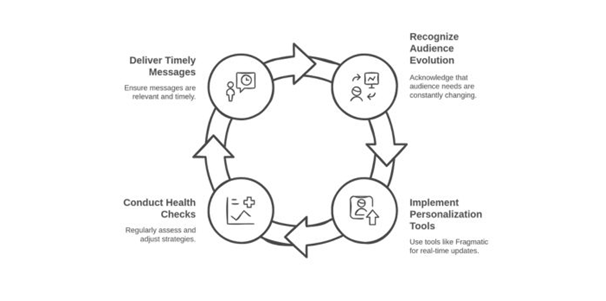
So just how do you keep evolving with your changing audiences? Implement web personalization tools like fragmatic that allow for real time changes in audience profiles through adaptive segmentation. It ensures that the information, recommendations, and outreach points of an audience are given a revamp and reflects where a customer is today and not where he/she would have found him/her months ago. Another way to do it is by conducting quarterly “personalization health checks” to reassess audience shifts, ensuring that strategies remain aligned with real-world distinctions.
Tip: Personalization isn’t as simple as delivering a relevant message to the right consumer; it’s about delivering that message at the right time in a consistently accurate, relevant and always up to date manner.
Conclusion:
The success of personalization in 2025 will hinge on being ethically and agile, on contextual intelligence, and on adaptability. Outdated data, biased AI, and static segmentation weaken engagement and scale of impact. Now is the perfect time to audit personalization strategies: integrating real-time feedback, mitigating AI bias, and ensuring our audience segmentation grows. Organizations that prioritize precise and relevant solutions will better connect with their customers and drive sustained growth.
